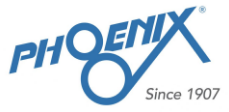Phoenix Specialty maintains an extensive inventory of certified raw materials in order to meet the delivery needs of our customers. We have over 300 different types of materials on hand in thousands of thickness, widths, and tempers. We are compliant with DFAR requirements and can provide material certifications with ease.
Please note: Phoenix Specialty Mfg. Co. does not sell material. We supply only the finished part.
In-house material handling capabilities include:
- Slitting
- Shearing
- Re-rolling
Materials we typically stock:
- Low, Medium, and High Carbon Steel: 1008, 1010, 1018, 1020, 1045, 1050, 1060, 1070, 1075, 1095
- Blue Tempered Spring Steel
- 4130 Chrome Molly
- Austenitic Stainless Steel: 301, 302, 304, 304L, 316, 316L, 321, 347
- Martensitic Stainless Steel: 410, 416
- Ferritic Stainless Steel: 430, 440
- Nickel-Cobalt Alloys (Aerospace): L605, A-286, N-155, H-188, 17-4PH, 17-5PH, 17-7PH, Inco 600,Inco 601, Inco 625, Inco 718, X-750, Hastelloy X, Rene 41, Monel, Nickel 200-201
- Brass (CDA 260), Copper (CDA 110) Beryllium (CDA 172), Phosphor Bronze (CDA 510)
- Aluminum: 1100-, 2024-, 3003-, 5052-, 6061-, 7075-
- Perforated or mesh: steel, stainless steel, and brass
- Nylon, Teflon, Delrin, Mylar, Nylatron, Phenolic, Polyethylene, Rulon, Vulcanized Fibre, GEE
Thousands of coils and sheets in stock!
Don’t see what you need, if it can be obtained we will source it!
